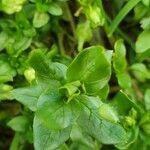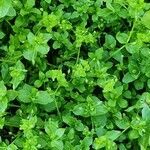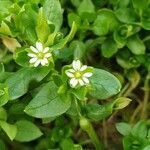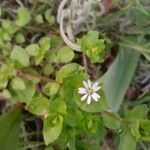Plants glabrous or moderately pubescent. Stems often branched proximally, 5-30 cm. Leaf blades usually flat, 0.5-1.5 cm, usually not channeled abaxially. Pedicels erect to ascending, spreading or, sometimes, reflexed in fruit, not secund. Flowers: sepals 2.5-4 mm; petals ± lanceolate, 3/ 7/ 8 times as long as sepals in flower, apex acute to acuminate; stamens usually 5. Capsule valves 4-5 mm. Seeds winged, lenticular, 0.6-0.9 mm wide, surface minutely roughened or obscurely tuberculate (50×), papillae absent or relatively few in marginal ring; wings usually white, sometimes slightly tannish, 0.4-0.6 mm wide. 2n = 18 (Europe).
Another European weed, is only casual in our coastal states. It has lanceolate, acute, non-contiguous pet, and seeds with a shining, white-transparent wing more than half as wide as the body.






